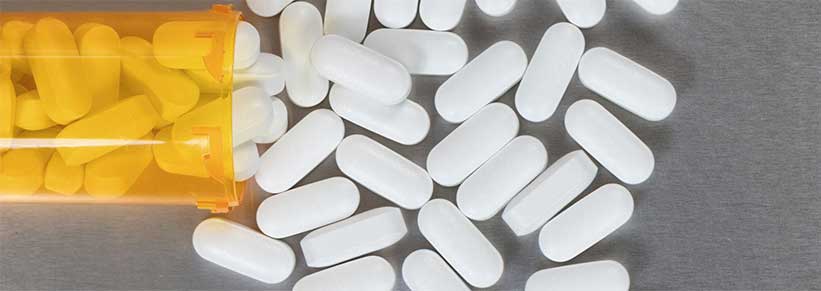Plugging Tramadol | Effects & Dangers

Medically Reviewed By: Manish Mishra, MBBS
Plugging tramadol is a process in which the opioid pain pill is crushed into a fine powder, combined with liquid, and inserted into the rectum. This can make the effects of the drug more intense and lead to an increased risk of overdose and serious health issues.

Tramadol hydrochloride (the brand name Ultram) is an opioid analgesic prescription medication used to help treat those suffering from moderate to severe pain.
However, some abuse tramadol by participating in the act of “plugging,” a process which includes the rectal administration of the drug.
The process of plugging involves crushing a tramadol pill, combining the substance with a liquid, and using an oral syringe to insert the drug into the rectum. Once absorbed by the blood vessels in the rectum, the effects of the drug will immediately occur and can dissipate rather quickly.
Because of this, plugging tramadol can create serious side effects as well as other life-threatening dangers to your health.
Effects Of Plugging Tramadol
As an opioid analgesic, tramadol reacts to the mu-opioid receptor agonist, affecting the serotonin neurotransmitters of the brain and the central nervous system (CNS).
Considered to be a Schedule IV controlled substance by the United States Drug Enforcement Administration (DEA), tramadol has the potential for drug abuse and physical dependence.
When plugging takes place, any of the common side effects of tramadol may become heightened due to how fast the drug enters the bloodstream when inserted rectally.
Common Side Effects
Some of the common side effects of tramadol may include:
- sedation
- euphoria
- constipation
- headache
- drowsiness
- dry mouth
- changes in mood
- tremors
Withdrawal Symptoms
The use of tramadol can help treat chronic pain, but the process of plugging the drug may create severe withdrawal symptoms.
When a person abuses tramadol, whether snorting or plugging the drug, they may be more at risk of developing withdrawal symptoms due to how the drug leaves the body’s system so quickly.
Opioid withdrawal symptoms may consist of sleeping problems, severe nausea, or sweating.
Dangers Of Plugging Tramadol
Prescribed for pain relief, tramadol is an opioid analgesic that has less abuse potential than other opioids such as:
- fentanyl
- oxycodone (OxyContin)
- hydrocodone (Vicodin)
- methadone
- hydromorphone (Dilaudid)
- codeine
Despite this, those who participate in plugging tramadol can increase the risk of experiencing life-threatening dangers.
Rectal Damage & Disease
Those plugging tramadol as a form of drug use may struggle with uncomfortable and serious damage to the rectum. Damage to the rectal tissue may lead to bacterial infections.
Anal tissue can receive tears or fissures because of the irritation of continued insertion of the drug. Those who share syringes or paraphernalia can develop diseases if bodily fluids are exchanged, including hepatitis or HIV.
Serotonin Syndrome
Speak with your prescribing doctor before taking tramadol, as possible drug interactions can occur. For instance, a life-threatening condition known as serotonin syndrome may take place if tramadol is combined with certain antidepressants.
Those taking tramadol should avoid selective serotonin reuptake inhibitors (SSRIs), serotonin and norepinephrine reuptake inhibitors (SNRIs), and monoamine oxidase inhibitors (MAOIs).
The United States Food and Drug Administration (FDA) states a person may experience serious mental health issues including hallucinations or severe agitation. Additionally, a person may have seizures and fluctuations in blood pressure if serotonin syndrome occurs.
Tramadol Overdose
Those who plug tramadol can accidentally experience a tramadol overdose. This is due to how quickly tramadol enters the bloodstream when inserted into the rectum.
When there are high doses of tramadol in the body’s system, a person may suffer from the following opioid overdose symptoms:
- cardiac arrest
- cold or clammy skin
- respiratory depression
- constricted pupils
- muscle flaccidity
- hypotension
- coma
If you suspect an overdose has occurred, contact 911 immediately. Once in the hands of a healthcare professional, the potentially life-saving medication naloxone (Narcan) may be administered to help reverse the effects of opioid overdose.
Tramadol Addiction Treatment
For those of you struggling with substance abuse, consider finding a treatment program to help you detox from prescription opioids.
After detox, other treatment options include behavioral therapy, medication-assisted treatment, mental health counseling, and other evidence-based services. To learn about our inpatient treatment options, please contact Ohio Recovery Center today.
- Anesthesia Essays and Researches — Comparative study of the analgesic efficacy of rectal tramadol versus intravenous tramadol for adult tonsillectomy https://www.ncbi.nlm.nih.gov/pmc/articles/PMC4173345/
- Drug Enforcement Administration — Tramadol https://www.deadiversion.usdoj.gov/drug_chem_info/tramadol.pdf
- Drug Safety — Real-World Data on Nonmedical Use of Tramadol from Patients Evaluated for Substance Abuse Treatment in the NAVIPPRO Addiction Severity Index https://www.ncbi.nlm.nih.gov/pmc/articles/PMC7847458/
- Food and Drug Administration — Ultram https://www.accessdata.fda.gov/drugsatfda_docs/label/2009/020281s032s033lbl.pdf
- National Library of Medicine: MedlinePlus — Tramadol https://medlineplus.gov/druginfo/meds/a695011.html

